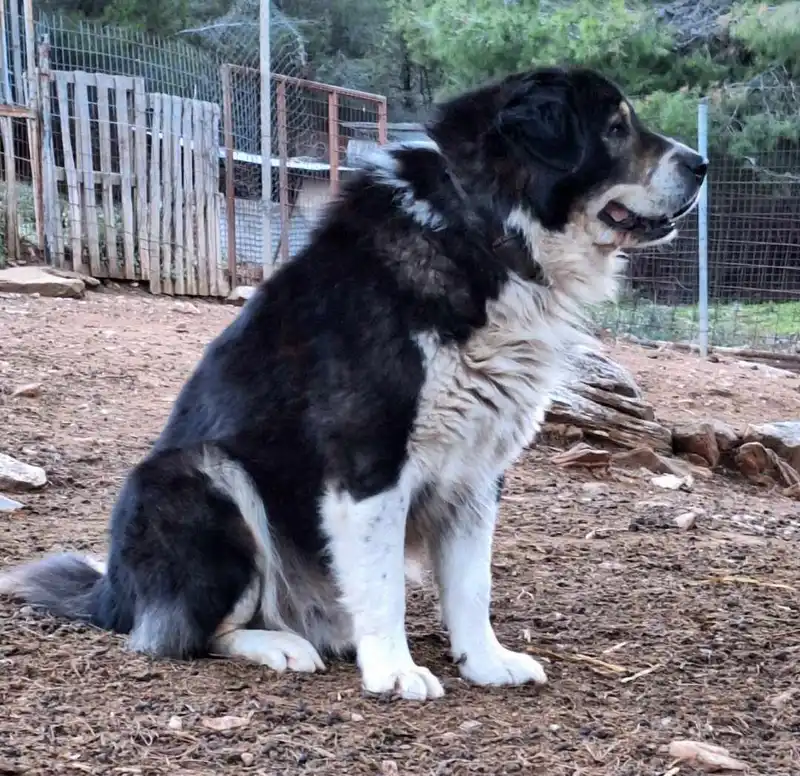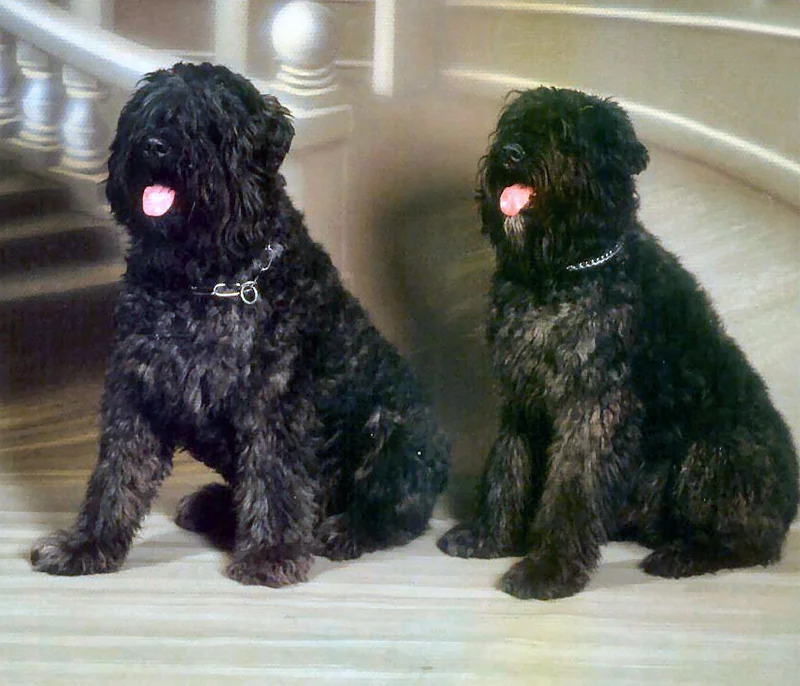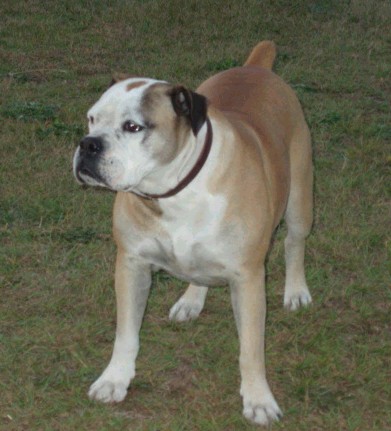Molossus
The Molossus is an ancient breed from Greece, known for its strength, loyalty, and protective instincts. Influential in developing modern mastiffs, this breed was a guardian and companion to shepherds and warriors.
Overview
🐕Breed Overview
✨Key Traits
💡What Makes Molossus Special
The Molossus is characterized by its impressive strength and size, making it a formidable presence. Their loyalty to their family and protective instincts are standout traits that make them excellent guardians.
They are also known for their intelligence, which allows them to learn commands and tasks quickly. Despite their imposing appearance, they can be gentle and affectionate with their loved ones, showcasing a dual nature that is both powerful and nurturing.
Their historical significance as protectors and companions adds to their allure, making them a breed with a rich legacy.
The Molossus is an ancient breed that has left a lasting legacy in the world of dogs. Originating from the mountainous regions of northwestern Greece, this powerful breed was bred for various roles, including livestock guardian, hunter, and even war dog. Known for their loyalty and protective instincts, the Molossus was a vital companion to the Molossian shepherds and warriors, earning a reputation for bravery and strength.
Despite its extinction as a distinct breed, the Molossus has significantly influenced the development of many modern mastiff-type dogs, including the St. Bernard, Rottweiler, and Great Dane. Physically, the Molossus is characterized by its large, muscular build, broad head, and strong jaws.
Their coat is medium-length and dense, with a variety of colors ranging from red and golden to brindle and black. The breed's temperament is marked by intelligence, loyalty, and a strong protective instinct, making them excellent guardians of both livestock and family. Training a Molossus requires patience and consistency, as they can be independent and strong-willed.
Early socialization is crucial to ensure they develop into well-adjusted companions. With proper training and care, the Molossus can thrive in various environments, from rural settings to homes with ample space for exercise. While the Molossus is no longer present in its original form, efforts are being made to preserve its legacy through the breeding of similar mastiff-type dogs.
Understanding the history and characteristics of the Molossus can provide valuable insights for potential owners of modern breeds that share its lineage.
🎉Fun Facts
The breed was known for its ability to guard livestock against large predators like bears and wolves.
The Molossus is considered one of the ancestors of many modern mastiff breeds.
They were often depicted in ancient art and literature, showcasing their importance in society.
Breed Characteristics
Family & Friends
Good Behavior
Get Up & Go
Household Harmony
Temperament & Personality
✨Key Traits
🐕Core Temperament
The Molossus exhibits a temperament that is both protective and gentle. They are known for their loyalty to their families and their ability to form strong bonds with their human companions.
While they can be reserved around strangers, they are generally friendly and affectionate with those they know. Their protective instincts make them excellent guardians, but they require proper training and socialization to ensure they are well-adjusted.
With the right guidance, the Molossus can be a loving and devoted family member, capable of providing both companionship and protection.
💫Personality Profile
The Molossus is known for its loyalty and protective nature, making it an excellent guardian for both family and livestock. They are intelligent dogs that require mental stimulation and consistent training to thrive.
While they can be independent and strong-willed, they are also gentle and affectionate with their families. Their temperament can vary based on socialization and training, but they generally exhibit a calm demeanor when properly cared for.
They are known to be friendly with those they know but can be wary of strangers, making early socialization crucial to ensure they are well-adjusted.
🔊Vocal Tendencies
The Molossus is generally not a frequent barker, but they will vocalize when necessary, especially when they perceive a threat to their territory or family. Their barking tends to be deep and resonant, serving as an effective deterrent to intruders.
While they may not bark excessively, they are alert and will communicate their concerns, making them reliable watchdogs. Their vocalizations can vary based on their mood and environment, with more vocalization occurring during play or when greeting familiar people.
Overall, they maintain a balanced noise level, making them suitable for various living situations.
Affection & Social Traits
Energy & Activity
Communication Style
Care Requirements
🏃♂️Exercise Requirements
Daily Exercise
The Molossus, being a large and powerful breed, requires a moderate amount of daily exercise to maintain its health and well-being. Ideally, an adult Molossus should engage in at least 60 to 90 minutes of exercise each day.
This can include activities such as brisk walks, play sessions in a secure yard, and engaging in dog sports that challenge their physical and mental capabilities. Puppies should have shorter, more frequent play sessions to avoid overexertion, while senior dogs may require gentler activities to accommodate their changing energy levels.
Regular exercise is crucial for preventing obesity, promoting cardiovascular health, and ensuring a well-balanced temperament. Insufficient exercise can lead to behavioral issues such as boredom, anxiety, and destructive tendencies, making it essential for owners to provide adequate physical and mental stimulation.
Preferred Activities
🏠Living & Adaptability
Space Requirements
The Molossus thrives in environments that provide ample space for movement and exercise. Ideally, they should have access to a large yard or open area where they can run and play freely.
While they can adapt to living in smaller spaces, such as apartments, it is crucial that owners commit to providing regular outdoor exercise and mental stimulation. In urban settings, owners should ensure that they can take their Molossus for daily walks in parks or open spaces.
The breed's size and energy level mean that they may become restless or exhibit destructive behavior if confined to small areas for extended periods. Therefore, a home with a secure, spacious outdoor area is highly recommended.
Climate Preference
🍲Feeding Guide
Schedule
Food Types
Portion Size
Special Nutritional Needs
The Molossus, being a large breed, may be prone to certain health issues such as hip dysplasia and obesity. It is essential to provide a balanced diet rich in protein and healthy fats to support their muscular build.
Supplements such as glucosamine may be beneficial for joint health, especially in older dogs. Owners should monitor their dog's weight and adjust food portions accordingly to maintain a healthy body condition.
✨Grooming Requirements
Grooming Overview
The Molossus has a medium-length coat that requires regular grooming to keep it healthy and free of mats. Brushing once a week is typically sufficient to remove loose hair and dirt, although more frequent brushing may be necessary during shedding seasons.
Bathing should be done as needed, usually every few months, to maintain coat cleanliness. Regular checks of the ears, teeth, and nails are also important to ensure overall health.
The breed's skin should be monitored for any signs of irritation or infection, particularly in the folds of the skin around the face and neck.
Care Schedule
Brush weekly, bathe as needed (every few months), trim nails every 2-4 weeks.
Health Profile
⚕️Health Care
Regular health care is vital for the Molossus, including routine veterinary check-ups, vaccinations, and preventive treatments for parasites. Early detection of health issues through regular examinations can significantly impact their lifespan. Owners should also be proactive in monitoring their dog's weight and overall health, adjusting care routines as needed to accommodate their changing needs throughout different life stages.
Health Issues Overview
⏳Average Lifespan
Genetic Factors
Genetics play a significant role in the Molossus's lifespan, as certain hereditary health issues can affect their overall health and longevity. Responsible breeding practices that prioritize genetic diversity and health screening can help mitigate the risk of inherited conditions. Potential owners should seek breeders who conduct health tests and provide transparency regarding the lineage of their dogs to ensure a healthy genetic background.
Living Conditions
The Molossus thrives in environments that allow for ample exercise and social interaction. Access to open spaces for running and playing is essential for their physical and mental well-being.
Additionally, a stable and loving home environment contributes positively to their lifespan, as stress and anxiety can lead to health issues. Regular veterinary care, a balanced diet, and consistent exercise routines are crucial for promoting longevity in this breed.
🏥Common Health Issues
Hip Dysplasia
Warning Signs
🔬Diagnosis
Veterinarians typically diagnose hip dysplasia through physical examinations and X-rays.
💊Treatment
Surgical options may be considered in severe cases, along with pain management and physical therapy.
📝Management Tips
Maintain a healthy weight, provide joint supplements, and engage in low-impact exercises to reduce stress on the joints.
Bloat (Gastric Dilatation Volvulus)
Warning Signs
🔬Diagnosis
Diagnosis is often based on clinical signs and X-rays.
💊Treatment
Emergency surgery may be required to correct the condition.
📝Management Tips
Feed smaller, more frequent meals and avoid vigorous exercise immediately after eating.
🛡️Preventive Care
🔬Hip Evaluation
Hip Evaluation assesses the hip joints for dysplasia and other abnormalities, crucial for large breeds like the Molossus.
📅 Annually after 2 years of age.
🔬Thyroid Function Test
Thyroid Function Test checks for hypothyroidism, a common issue in many breeds, including the Molossus.
📅 Every 1-2 years, or as recommended by a veterinarian.
Training
🧠Intelligence & Trainability
💪Work Drive
The Molossus has a strong work drive, stemming from its historical roles as a guardian and protector. They thrive when given tasks to complete, whether it's herding livestock, participating in obedience training, or engaging in dog sports.
Providing them with a job not only keeps them mentally stimulated but also satisfies their natural instincts. Activities such as tracking, agility, or even simple tasks like fetching can fulfill their need for purpose.
Without adequate mental engagement, they may become bored and exhibit undesirable behaviors, making it essential for owners to incorporate structured activities into their daily routine.
⚠️Training Considerations
Training a Molossus can present some challenges due to their independent nature and strong-willed temperament. They may exhibit stubbornness, particularly if they do not see the value in a command.
To overcome these challenges, it is essential to establish a consistent training routine that incorporates positive reinforcement techniques. Engaging them with varied training exercises that stimulate their intelligence can also help maintain their interest.
Socialization from an early age is crucial to ensure they are well-adjusted and comfortable around other dogs and people. Owners should be patient and persistent, as building a strong bond of trust will facilitate better training outcomes.
📝Training Tips
Training a Molossus requires a firm yet gentle approach. Start with basic obedience commands and gradually introduce more complex tasks. Consistency is key; use the same commands and rewards to reinforce desired behaviors.
Incorporate play into training sessions to keep them engaged and motivated. Socialization is vital; expose them to different environments, people, and other animals to help them develop a well-rounded temperament. Consider enrolling in obedience classes or working with a professional trainer familiar with large breeds to ensure effective training techniques are employed.
Regular mental stimulation through puzzle toys or interactive games can also enhance their learning experience.
History & Heritage
📜Origin Story
The Molossus originated in the mountainous regions of northwestern Greece, particularly among the Molossian people who were renowned for their fierce and loyal dogs. These dogs were bred to protect livestock from predators such as wolves and bears, showcasing their bravery and strength.
The breed gained prominence during the classical era, with notable figures like Alexander the Great taking these dogs on military campaigns. Their reputation as formidable guardians spread throughout the Greek world, leading to their introduction in Italy and beyond.
The Molossus's influence on dog breeding continued for centuries, shaping the characteristics of many modern mastiff breeds that we recognize today.
⏳Development History
The Molossus is believed to have originated from the Molossians, a Greek tribe known for their formidable dogs. Over centuries, these dogs were bred for various purposes, including guarding livestock, hunting, and even warfare.
The breed's physical characteristics evolved to meet the demands of these roles, resulting in a powerful and robust dog. As the Molossus spread throughout the Mediterranean region, it influenced the development of several modern breeds, including the St.
Bernard, Rottweiler, and Great Dane. Despite its extinction as a distinct breed, the Molossus's genetic legacy lives on in these contemporary breeds, which share similar traits and characteristics.
🛡️Purpose & Historical Role
Historically, the Molossus served multiple roles, primarily as a livestock guardian and protector. They were bred to defend flocks from large carnivores and were also used in hunting and warfare.
Their strength and loyalty made them ideal companions for shepherds and warriors alike. In ancient texts, the Molossus is often depicted as a fierce protector, capable of defending its territory against intruders.
This breed's contributions to society were significant, as they not only safeguarded livestock but also provided companionship and loyalty to their human counterparts.
🏺Cultural Significance
The Molossus holds a significant place in ancient Greek and Roman culture, often associated with strength, loyalty, and bravery. These dogs were not only companions but also vital protectors of livestock and property.
Their reputation as fierce guardians made them popular in various historical accounts, including literature by Virgil and Aristotle, who praised their physical prowess and protective instincts. The breed's legacy continues to influence modern mastiff-type dogs, which are often regarded as noble and loyal companions.
The Molossus's historical importance is further highlighted by its depiction in ancient art and sculpture, showcasing its esteemed status in society.
Conservation Status
This breed is extinct and no longer exists in its original form.









